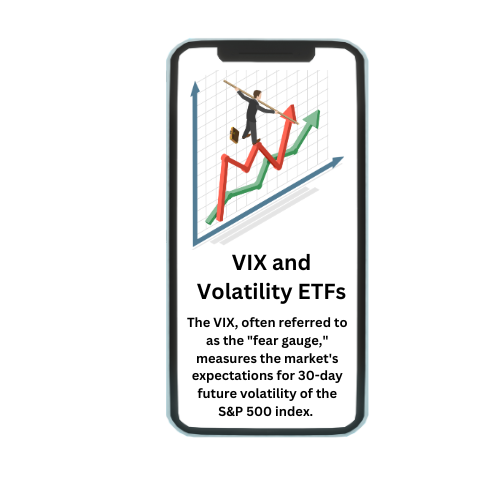In the realm of finance, the Win/Loss Ratio stands as a pivotal metric for evaluating the performance and risk of investment strategies. This ratio quantifies the relationship between the number of profitable trades to losing trades over a specific period, offering crucial insights into the profitability of a trading system or portfolio. A ratio greater than 1 suggests that the strategy generates more profits than losses, indicating a potentially successful approach. Conversely, a ratio below 1 signals that losses exceed gains, prompting a reevaluation of the strategy. By understanding and interpreting the Win/Loss Ratio alongside other financial metrics, investors can make informed decisions, refine their strategies, and achieve better risk-adjusted returns in the market.
What Is the Win/Loss Ratio?
- The Win/Loss Ratio is a fundamental financial metric used to assess the performance of investment strategies, trading systems, or portfolios. It measures the relationship between the number of winning trades and losing trades over a specific period.
- Essentially, it calculates the ratio of the total number of winning trades to the total number of losing trades. For example, if an investor has 50 winning trades and 25 losing trades over a year, the Win/Loss Ratio would be calculated as 50/25, resulting in a ratio of 2.
- This ratio indicates that for every losing trade, there are two winning trades, suggesting a potentially profitable strategy. A ratio greater than 1 indicates that the strategy generates more profits than losses, while a ratio less than 1 suggests that losses outweigh profits. Investors use the Win/Loss Ratio to evaluate the effectiveness of their trading strategies and to make informed decisions about their investment portfolios.
The Formula For The Win/Loss Ratio
The formula for the Win/Loss Ratio is a straightforward calculation used in finance to assess the performance of trading strategies or investment portfolios. It is defined as the ratio of the total number of winning trades to the total number of losing trades over a specific period. Mathematically, the Win/Loss Ratio is expressed as:
Win/Loss Ratio = Number of Winning Trades / Number of Losing Trades
For example, if an investor has 50 winning trades and 25 losing trades over a year, the Win/Loss Ratio would be calculated as 50/25, resulting in a ratio of 2. This means that for every losing trade, there are two winning trades. A Win/Loss Ratio greater than 1 indicates that the strategy is profitable, as the number of winning trades exceeds the number of losing trades. Conversely, a ratio less than 1 indicates that the strategy is not profitable, as the number of losing trades is greater than the number of winning trades. The Win/Loss Ratio is a critical metric used by investors to evaluate the effectiveness and profitability of their trading strategies and to make informed decisions about their investment portfolios.
What The Win/Loss Ratio Can Tell You
The Win/Loss Ratio provides valuable insights into the performance and effectiveness of a trading strategy or investment portfolio. Here are some key points it can tell you:
- Profitability: The Win/Loss Ratio indicates whether a trading strategy or portfolio is profitable. A ratio greater than 1 suggests that the strategy generates more profits than losses, while a ratio less than 1 indicates that losses outweigh profits.
- Risk Management: It helps assess the risk associated with a trading strategy. A higher Win/Loss Ratio generally indicates lower risk, as the strategy is more likely to produce winning trades. However, it’s essential to consider other risk metrics as well.
- Consistency: The ratio can reveal the consistency of a trading strategy over time. A stable and consistent Win/Loss Ratio may indicate a reliable and robust trading approach.
- Effectiveness: It measures the effectiveness of entry and exit points in a trading strategy. A high Win/Loss Ratio suggests that the strategy effectively captures profitable opportunities and minimizes losses.
- Comparison: It allows for comparisons between different trading strategies or portfolios. Investors can compare the Win/Loss Ratios of various strategies to determine which ones are more effective and suitable for their investment goals.
- Adjustments: The Win/Loss Ratio can prompt adjustments to a trading strategy. If the ratio is below expectations, investors may need to refine their strategy, improve risk management, or reconsider their approach to trading.
- Long-term Viability: It helps evaluate the long-term viability of a trading strategy or investment portfolio. A consistently high Win/Loss Ratio over an extended period suggests that the strategy may be sustainable and adaptive to changing market conditions.
How To Interpret A Win/Loss Ratio
Interpreting the Win/Loss Ratio is crucial for understanding the performance and effectiveness of a trading strategy or investment portfolio. Here are some key points to consider when interpreting this metric:
- Threshold for Profitability: A Win/Loss Ratio greater than 1 indicates that the strategy is profitable. For example, a ratio of 2 means that for every losing trade, there are two winning trades. This suggests that the strategy generates more profits than losses, making it potentially successful.
- Risk Consideration: While a high Win/Loss Ratio is desirable, it’s essential to consider other risk metrics such as the risk-adjusted return, maximum drawdown, and volatility. A high Win/Loss Ratio alone does not guarantee a low-risk strategy.
- Market Conditions: The interpretation of the Win/Loss Ratio should consider the prevailing market conditions. A strategy that performs well in a bullish market might not be as effective during a bearish market, even if it has a high Win/Loss Ratio.
- Consistency of Results: It’s important to assess the consistency of the Win/Loss Ratio over time. A stable and consistent ratio indicates that the strategy is reliable and can generate sustainable returns.
- Comparison with Benchmarks: Comparing the Win/Loss Ratio with benchmarks or industry standards can provide context. It helps determine whether the strategy’s performance is above or below average, and whether adjustments are needed.
- Diversification: The Win/Loss Ratio should be considered in conjunction with diversification strategies. A well-diversified portfolio may have a lower Win/Loss Ratio but can still deliver satisfactory risk-adjusted returns.
- Long-term Perspective: Investors should take a long-term perspective when interpreting the Win/Loss Ratio. Short-term fluctuations in the ratio may not accurately reflect the overall performance of the strategy.
- Holistic Analysis: Lastly, a holistic analysis combining the Win/Loss Ratio with other performance metrics (such as Sharpe Ratio, Sortino Ratio, and maximum drawdown) provides a comprehensive assessment of the strategy’s performance and risk.
Example Of The Win/Loss Ratio
An example of the Win/Loss Ratio provides a clear illustration of how this metric works in practice. Let’s consider an investor who has been actively trading stocks over the past year. During this period, the investor executed 100 trades, out of which 60 were profitable (winning trades) and 40 resulted in losses (losing trades).
To calculate the Win/Loss Ratio for this investor:
Win/Loss Ratio = Number of Winning Trades / Number of Losing Trades
In this case:
Win/Loss Ratio = 60 / 40 = 1.5
- This Win/Loss Ratio of 1.5 indicates that for every 1.5 winning trades, there is approximately 1 losing trade. Therefore, this trading strategy is profitable, as the number of winning trades exceeds the number of losing trades.
- Interpreting this example, the investor can conclude that their trading strategy has been effective in generating profits over the year. However, it’s important to consider other factors such as risk management, market conditions, and the consistency of the strategy’s performance. A single example of the Win/Loss Ratio provides a snapshot of profitability, but ongoing analysis and adjustment are necessary to maintain success in trading and investing.
Conclusion
- In conclusion, the Win/Loss Ratio is a vital metric for assessing the performance and effectiveness of trading strategies and investment portfolios. It provides valuable insights into the profitability of a strategy by measuring the ratio of winning trades to losing trades over a specific period.
- A Win/Loss Ratio greater than 1 indicates that the strategy is profitable, while a ratio below 1 suggests that losses outweigh profits. Interpreting this metric requires consideration of various factors such as risk management, market conditions, and the consistency of results.
- While a high Win/Loss Ratio is desirable, it should be used in conjunction with other metrics to gain a comprehensive understanding of a strategy’s performance. Investors can use the Win/Loss Ratio to make informed decisions, refine their strategies, and optimize their portfolios for better risk-adjusted returns. By understanding and interpreting the Win/Loss Ratio effectively, investors can navigate the complexities of the financial markets and achieve their investment goals.
Frequently Asked Questions
The Win/Loss Ratio itself cannot be manipulated, but it can be influenced by the selection of trading strategies and risk management practices.
Win-Loss Ratios should be evaluated regularly, depending on the frequency of trading activities and changes in market conditions. Quarterly reviews are common.
To maintain a high Win/Loss Ratio, investors can focus on improving risk management, optimizing entry and exit points, and diversifying their portfolio.







